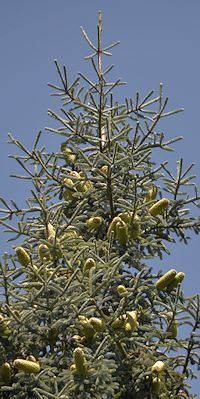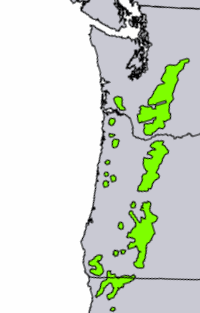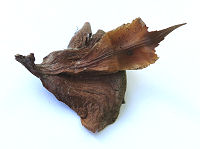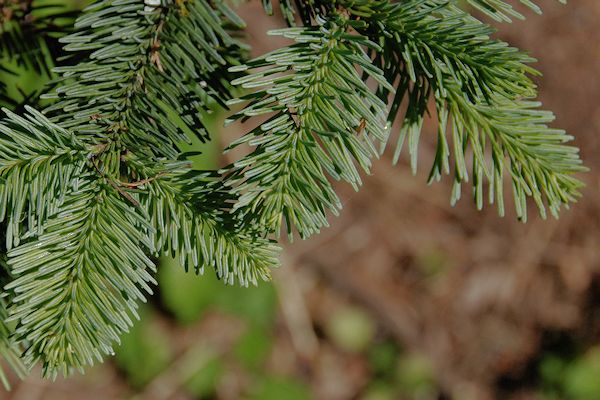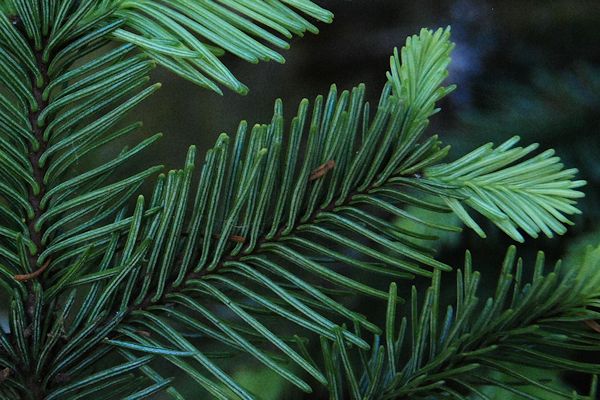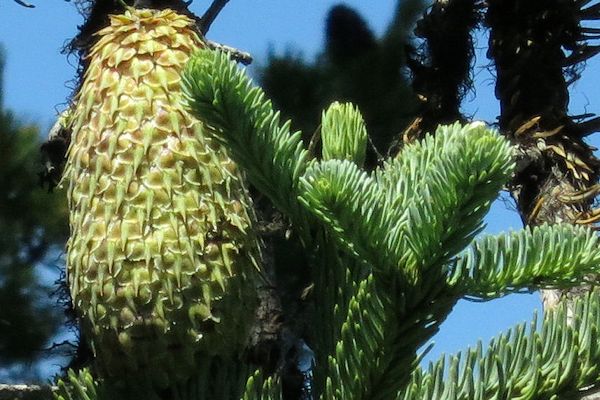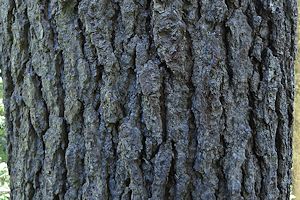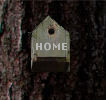 |
Northwest Conifers |
AboutAll ConifersConifersLow-elevationHigh-elevationOthersEast SideSouthwestNon-natives——————Conifer ConesIndexMore Info |
Noble Fir
– Abies
procera
|
|
|
Noble fir is arguably the most attractive of the native firs because of its symmetrical form, bluish color, and the elegant, well-groomed appearance of its needles. It grows to 250 feet (75 meters). Needles: It's easy to identify noble fir by looking at the underside of a twig. The needles are shaped like hockey sticks, and sweep away from the twig uniformly, giving them a combed appearance. The needles are blue-green with bands of white on each side. The hockey stick shape is unique among the firs of northwest Oregon and Washington. Red fir, which grows in the mountains of California, has similar looking needles. Cones: The cones sit upright on the branches near the tree top, like other firs. But noble fir cones have distinctive whiskery bracts that protrude beyond the scales. Since the cones fall apart at maturity, you are not likely to find any under the tree. However, you may be able to find some of the scales with their unique bracts on the ground.
Scale and bract from a noble fir cone Bark: Young bark is gray and smooth with resin blisters. Older bark breaks into furrows with flat, narrow ridges. Where it grows: Noble fir grows at elevations above 2000 feet (600 meters) in the Coast Range and the Cascades. Although they don’t usually grow in pure stands, you can find large numbers on Saddle Mountain near Seaside, and at the top of Larch Mountain in the Columbia Gorge. Uses: The wood is valued for lumber due to its strength and fine grain. It has been used in airplanes and ladders because it is strong and light. Noble fir lumber was once sold as Oregon larch. Since fir wood had little commercial value as lumber, noble fir was marketed as the more highly prized larch. Several peaks called Larch Mountain are named after this tree. Noble fir is also a popular Christmas tree and often planted as an ornamental. Names: David Douglas named it Abies nobilis when he found it growing in the Columbia Gorge in 1825. It's now called Abies procera. Procera comes from the Latin procerus, which means "tall." It's a fitting name, since it is the tallest of the firs, sometimes growing to 260 feet. Other common names: Red fir and white fir.
|
"Hockey stick" needles from below
|
© 2011 Ken Denniston

